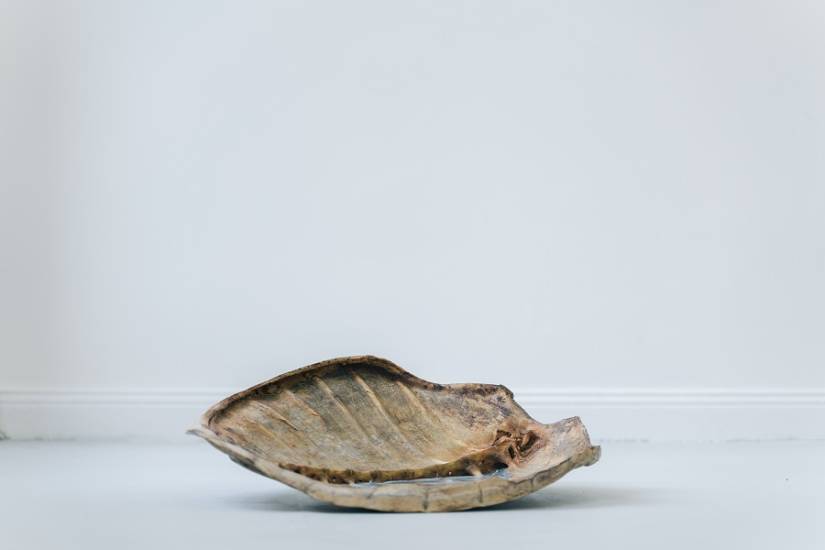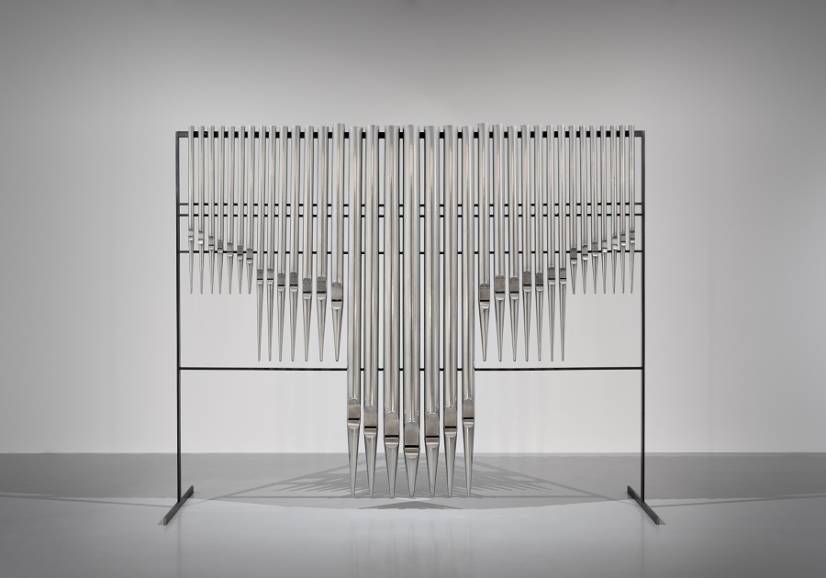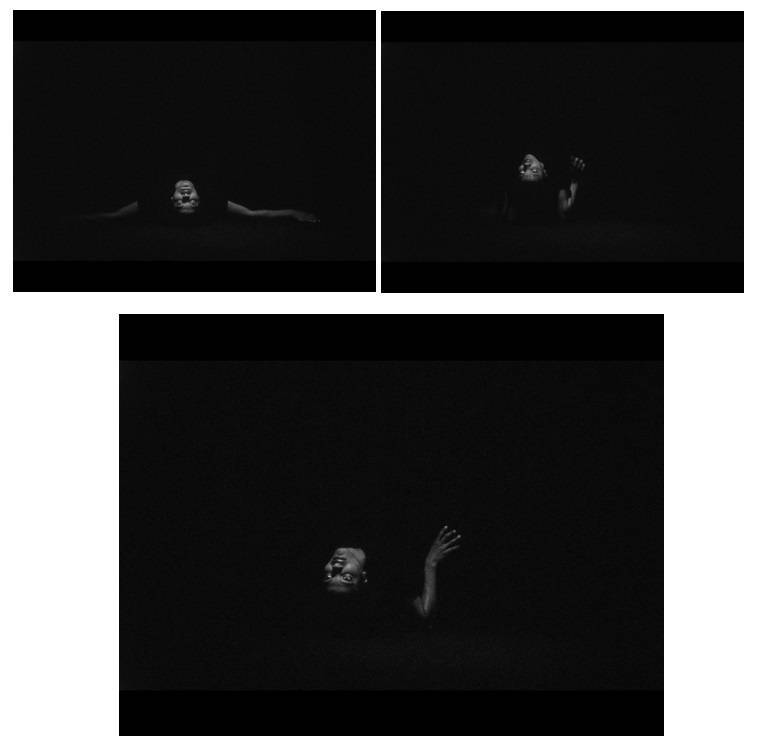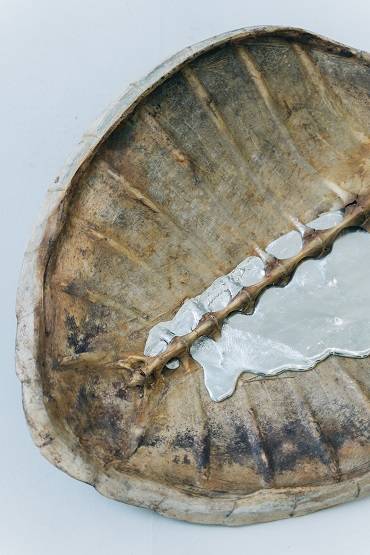The visitor is invited to enter "In this place of occult imbalance". Exploring in its entirety the works of Mathieu Kleyebe, which express the colonial trauma of Guyana, is the aim of the personal exhibition presented by Le Centre d'art contemporain d'Ivry – Le Crédac, supported by the Drac Île-de-France, until April 2, 2023.
Mathieu Kleyebe Abonnenc develops, through his recent sculptures, videos and installations, a practice inspired by the work of the Guyanese writer Wilson Harris (1921-2018). For the record, Wilson Harris was a surveyor and hydrographer in Guyana for seventeen years. The works unfold throughout the space of the Crédac and the visitor travels in a living and sound landscape where the intimate history of the artist and the real and fictional stories common to the Caribbean are mixed.
to watch and listen
Learning to look and listen are the key words to decipher the traces and scars that have indelibly marked the lands, trees and rivers, which Thomas Tilly (sound artist) captured for the exhibition. The landscape, like the bodies of those who have suffered violence and forced migration, and their heirs, keeps in the skin the memory of these stories, ready to resonate with those who visit it. The forms and gestures that are played, like a dance, then also narrate the story of a life-saving adaptability and resistance.
Mathieu Kleyebe Abonnenc, Le veilleur de nuit, for Wilson Harris 2018. Tortoise shell, gallium. © Photo: courtesy of the artist
For his exhibition at the Crédac, Mathieu Kleyebe Abonnenc invites some of the researchers, choreographers, artists and programmers with whom he collaborates. In this place of occult imbalance is accompanied by a program with Alexandre Dimos, Betty Tchomanga, Thomas Tilly, Elvan Zabunyan and Victor Zebo.
Mathieu Kleyebe Abonnenc, The anatomy of invaders resurrected and tuned to the music of a painted silence, 19... -2018. Installation. © Photo: courtesy of the artist
"After personal exhibitions 24 hours in Hanoi de Thu Van Tran (2019) and Cima Cima Kapwani Kiwanga (2021) To cite the most recent, the Crédac continues the production and dissemination of contemporary works that combine autobiographical elements with the exploration of an ecological and decolonial vision. What these exhibitions have in common is that they are based on an interconnection of beings, time and places, offering a poetic and sensitive reading of post-colonial thoughts," says Claire Le Restif, Director of the Crédac and curator of the exhibition. It’s in this place of occult imbalance or the people that we must take care of, for, let us not doubt it, it is there that his soul freezes and lights up his perception and breath...". It’s from this excerpt from the book Les Damned of the Earth (1961) by Frantz Fanon whom Mathieu Kleyebe Abonnenc chose the title of his exhibition at the Crédac. The artist expresses his political position through various complementary activities, primarily plastic, but also literary and editorial," explains the director of the Centre d'art contemporain d'Ivry.
© Mathieu Kleyebe Abonnenc, Limbé, 2021, film
Exhibition route
Gathered for the first time in the great hall of the Crédac, The night watchman, for Wilson Harris (2018) are three inverted sea turtle shells sometimes still carrying the scars of the sabre that killed and dislodged the endangered animal. Containing gallium, metal that becomes liquid on contact with the skin or during direct exposure to the sun, these works can be transformed before our eyes according to the evolution of thermal conditions. A nod to the multiple faces of certain pre-Columbian deities such as Quetzalcoatl or Tezcatlipoca, but also to the artisanal gold mining using a shotgun, these three works work together as a digest of the history of Guyana bringing together: the story of the exploitation of an indigenous animal species, a cosmogonic story that survived the conquest, and the story of the exploitation of the bowels of this land by those who projected dreams of fortune and wealth.
Mathieu Kleyebe Abonnenc, Le veilleur de nuit, for Wilson Harris 2018. Tortoise shell, gallium. © Photo: courtesy of the artist
These dreams of abundance were those of Joseph Bernes, gold-digger and former occupant of a house on the banks of the Maroni River, in the village of Wacapou in French Guiana, acquired since by the artist’s mother. The forest, the river, the rain is a collection of utilitarian objects that ensured Bernes a life of minimum comfort: enough to heat, feed, navigate on the river. The title of these objects recovered by Abonnenc restores the visual and sound landscape of this Amazonian village housing a community of gold seekers.
Mathieu Kleyebe Abonnenc, Le veilleur de nuit, for Wilson Harris 2018. Tortoise shell, gallium. © Photo: courtesy of the artist
Room 2 and Room 3. The music of living landscapes; (2022) is a sound installation born from a collaboration between Mathieu Kleyebe Abonnenc and Thomas Tilly, artist working in the field of experimental musical research and involved in several collaborative projects with teams of biologists and anthropologists. The Music of Living Landscapes is a text by Wilson Harris broadcast in 1996 by BBC Radio 4 that Mathieu Kleyebe Abonnenc has worked to recover and transcribe. Embodied for this sound installation in a female voice and a male voice that succeed and sometimes mingle, the text is accompanied by recordings made by Tilly in the Guyanese forest. Through the voices of birds, mammals, insects and streams, which inhabit these spaces, a veritable soundscape comes to life in our ears.






